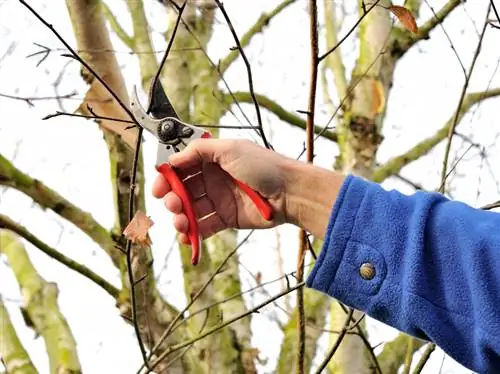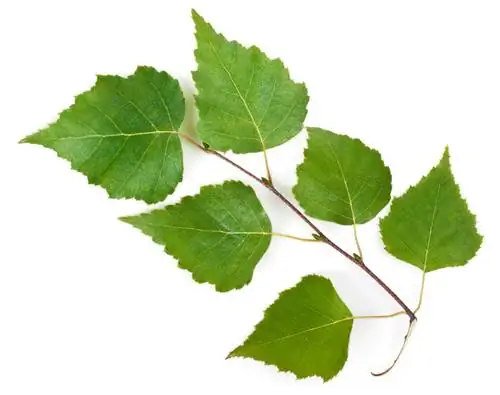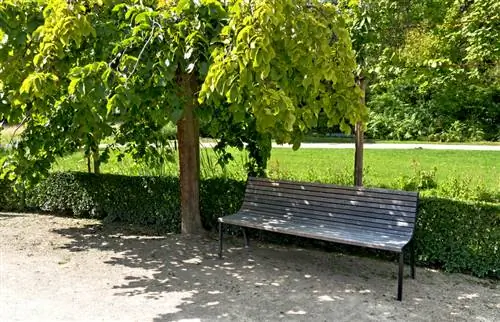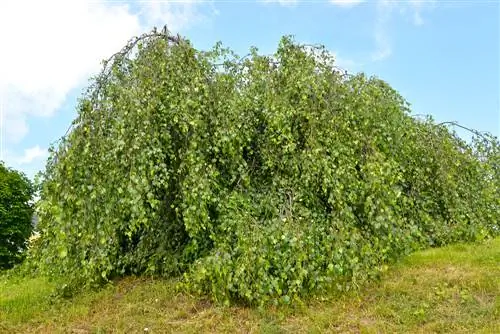- Author admin [email protected].
- Public 2023-12-16 16:46.
- Last modified 2025-06-01 06:02.
The silver birch (Betula pendula) is not only often found in sparse forests and field edges, it can also be wonderfully planted in your own garden - provided you have enough space there for the very fast-growing deciduous tree. In particular, the variety 'Youngii', also known as weeping birch, and the blood birch 'Purpurea' have a high ornamental value. Birch trees, regardless of the variety, should not be cut back if possible - and if such a measure is necessary, it is best to carry it out in late autumn or winter.

When and how should you prune a silver birch?
A silver birch should ideally be cut between November and January on a warm and dry day. Cut diagonally, at least 3 mm above a sleeping eye and leave two leaf buds. Use clean and sharp cutting tools.
Wedding birch basically doesn't need any pruning
Actually, pruning a silver birch is not a particularly good idea because the tree has a very strong tendency to bleed. It can also happen that if the tree is cut improperly, it will either stop growing completely in the desired area or - as a compensation - it will sprout a lot of unsightly spider veins. To avoid such a development, young shoots should only be cut back when they are between 20 and 25 centimeters long, although you should always leave at least two leaf buds. Also
- each cut should be kept slightly slanted
- always make the incision at least three millimeters above a sleeping eye
- only remove dead branches directly at the base
- always use clean and sharp cutting tools
It can also happen that the silver birch develops several new shoots at the interface. You should remove these - except for one - in good time.
Perfect cutting time between November and January
In addition, silver birch trees should only be cut on a warm and dry day between November and January, otherwise the trees tend to bleed due to the high sap pressure, especially in spring. However, in winter the birch is dormant, so at least this danger does not exist. However, make sure to seal larger incisions well with a wound sealant (€11.00 on Amazon).
Getting birch sap in spring
Traditionally between March and the beginning of May, the slightly sweet tasting and very he althy birch sap can be obtained, for which there are two tried and tested methods:
1. Cut off the end of a smaller branch and place it in a bottle. Seal the opening well and attach the bottle to the branch.
2. Drill a small hole in the birch trunk and insert a straw or something similar into it. Attach a collecting container below the opening into which the juice will be directed. The hole should be closed well again after tapping.
Tip
Birch sap lasts for a maximum of a week in the refrigerator. However, you can preserve it by mixing it with vodka or something similar in a 1:1 ratio.






